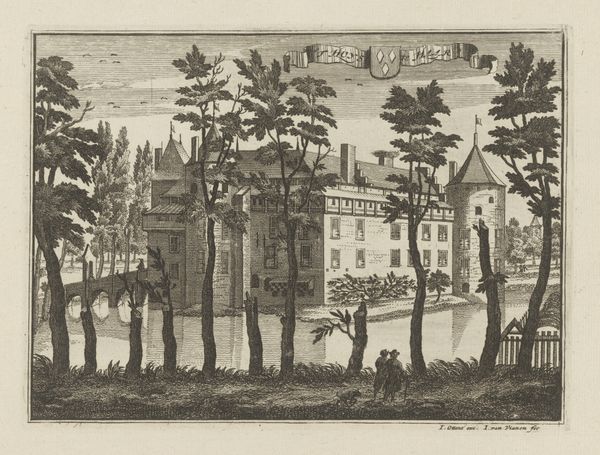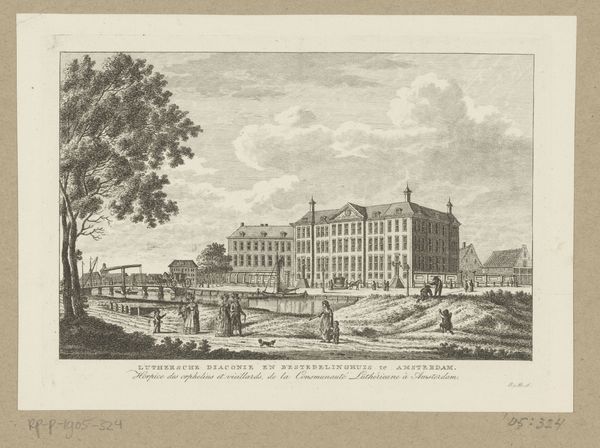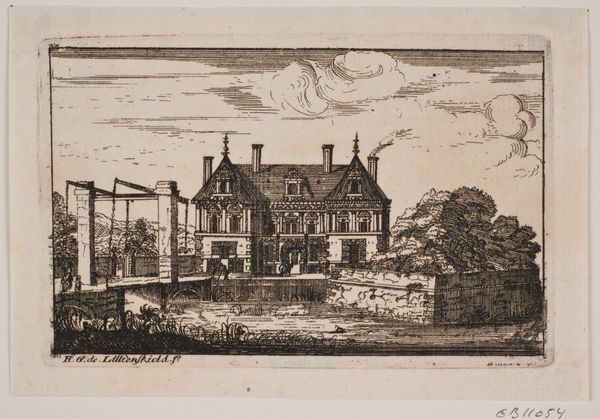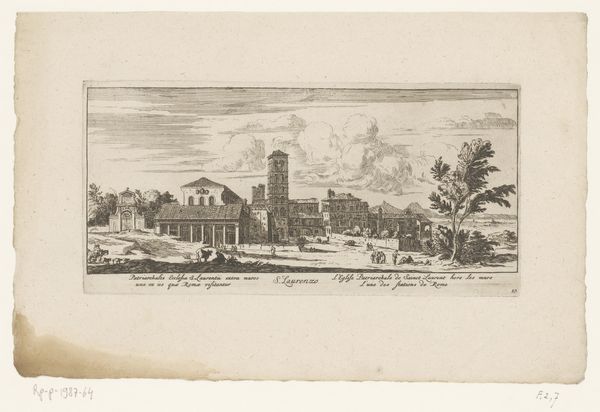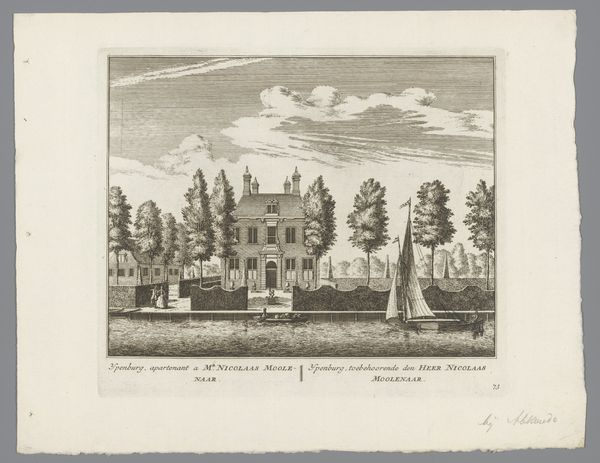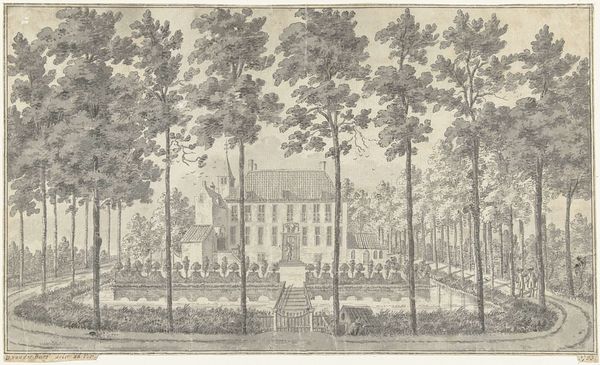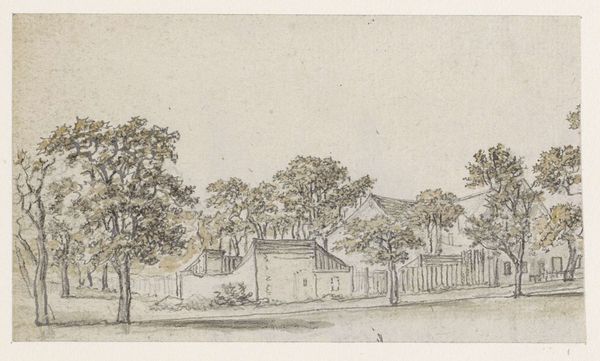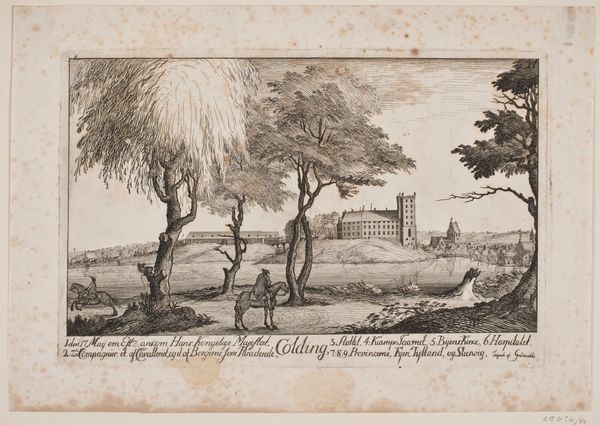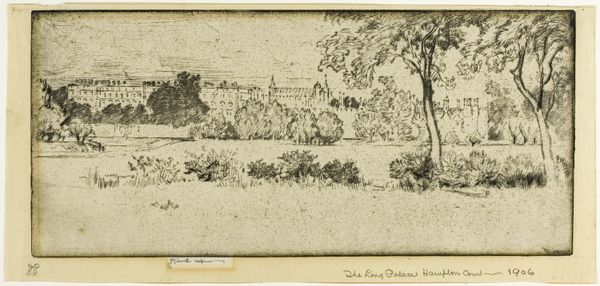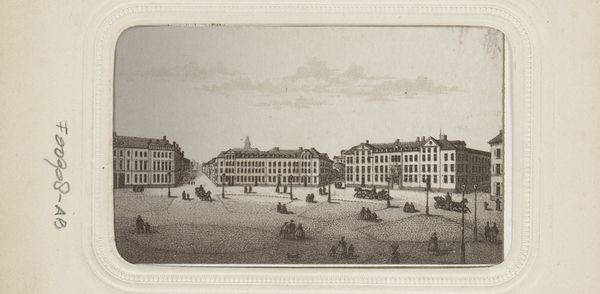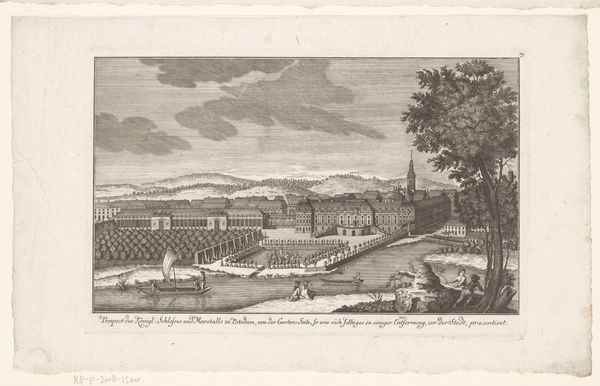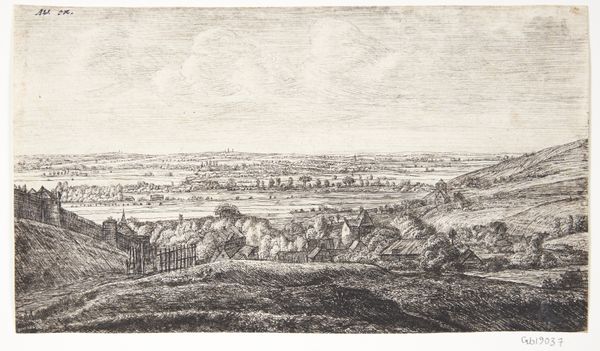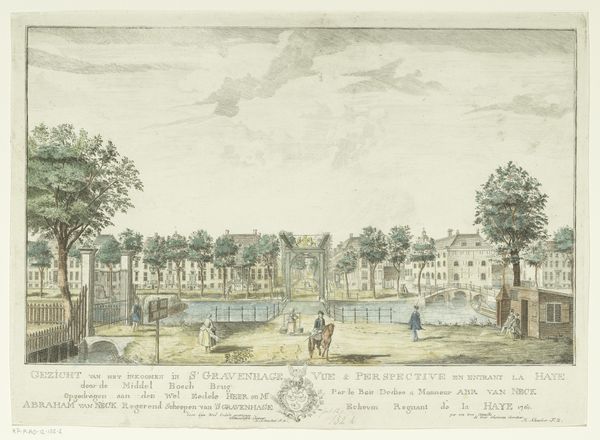
Dimensions: support: 81 x 398 mm
Copyright: CC-BY-NC-ND 4.0 DEED, Photo: Tate
Curator: This is Thomas Sandby's "Nottingham," held here at the Tate. Note the panoramic scope. Editor: It has a placid, almost dreamlike quality, doesn't it? The delicate sepia tones contribute to that feeling. Curator: Indeed. Sandby, born in 1723, presents the town elevated, framed by a regiment of trees. It feels deliberately composed. Editor: Yes, and the cathedral looms large on the right. I wonder about Sandby's patrons and the significance of depicting Nottingham at this particular moment. Was it commissioned to showcase the town's prosperity or perhaps as a memento of place? Curator: Such considerations are vital. Beyond that, observe the linear precision and the way Sandby uses perspective to create depth. Editor: Both valid readings! The image hints at the intersection of civic pride and individual memory. It is a slice of life as seen by Sandby, and consumed by his audience. Curator: A fascinating piece, however we interpret it. Editor: Agreed, a window into the past.
Comments
Join the conversation
Join millions of artists and users on Artera today and experience the ultimate creative platform.
tate 3 months ago
⋮
Like his brother Paul, Thomas Sandby is known for his mastery of perspective. Both artists occasionally used drawing aids such as the 'Camera Obscura'. This drawing is meticulous in detail, executed with the finest of pens and employing the use of delicate cross-hatching. Although we cannot be certain, the perspective and the very accurate proportions of the buildings here suggest that Sandby has used a drawing aid. A similar drawing by Sandby is inscribed 'Windsor for the Goswell's drawn in a camera [obscura]'. Gallery label, August 2004
